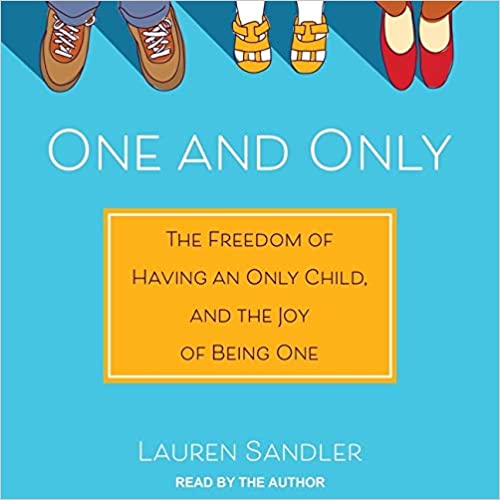One and Only by Lauren Sandler

In an era where harmful negative stereotypes are coming under attack, one such stereotype has still stood the test of time: that of children without siblings as spoiled and socially stunted. The stereotype is remarkably consistent across cultures, existing even in places like China and Germany where having one child is the norm. In typical stereotype fashion, a majority of people acknowledge that the stereotype doesn’t align with the only children they personally know, but nevertheless insist it is true for the demographic as a whole. Much as only children are viewed as being selfish, the parents of only children are maligned for depriving their child of siblings.
Only children have been extensively studied and the overwhelming majority of studies have found that only children are perfectly normal. Along major personality dimensions, only children closely resemble first-born siblings: emotionally mature, ambitious, independent, reliable, conscientious, and risk-averse. Only children tend to have unusually strong relationships with their parents and normal relationships with their peers. Much like first-borns, only children tend to have higher academic and career achievement than later-born siblings.
Studies have highlighted common but often-overlooked parts of the only child experience that aren’t part of the stereotype. Since only children are outnumbered by their parents in their own household, they are more likely than siblings to see their parents as a daunting and immovable presence. Since only children are their parents’ one shot at parenting, they can sometimes come under heavy achievement pressure from their parents; even in the absence of external pressure, only children often internalize it themselves.
Siblings come with a dark side; all siblings compete for their parents’ attention, which is a finite resource. Each sibling after the first has less one-on-one time with their parents and has fewer words spoken to them, which does a disservice to younger siblings. On the flip side, family life tends to be dumbed down to accommodate the youngest child in the family, which does a disservice to older siblings.
For parents, the first child brings the biggest lifestyle disruption to their lives, and each successive sibling is less marginally costly and less disruptive. However, adding a second child to a household with one child often proves to be a bigger lifestyle shock than expected. It’s often the second child rather than the first that prompts parents to move out into the suburbs in search of a bigger living space. It’s often the second child rather than the first that prompts mothers to back off from their careers and forces fathers to double down on theirs.
Outside of China, having exactly one child is rarely a couple’s initial plan. Having one child is rarely thought of as an ideal or conventional family; “When are you having kids?” is almost always asked in the plural tense. Single-child households are usually the product of circumstances or of intentional course correction. Many couples have independently found one child to be a happy compromise, one that offers the full experience of parenthood while still allowing full participation in the adult world.
The recent rise of only children is part of a longstanding trend towards declining fertility rates in industrialized countries. Declining fertility is being driven by birth control, reduced informal social support networks, the rising cost of raising a child, the rising cultural expectations of parents, a cultural quality-over-quantity shift in parenting, and declining religious fervor. It is also common for couples to end up having fewer children than initially planned, but couples usually make peace with how things turn out. Fertility remains an intensely personal topic that is full of unwelcome opinions from strangers; there is simply no way to please everyone. Couples should ensure that their family planning decisions are based on genuine life goals and pragmatic considerations rather than vague fears or vague stereotypes. When couples stop at one child, even if it’s a course correction, life usually turns out well for both the child and the parents.
